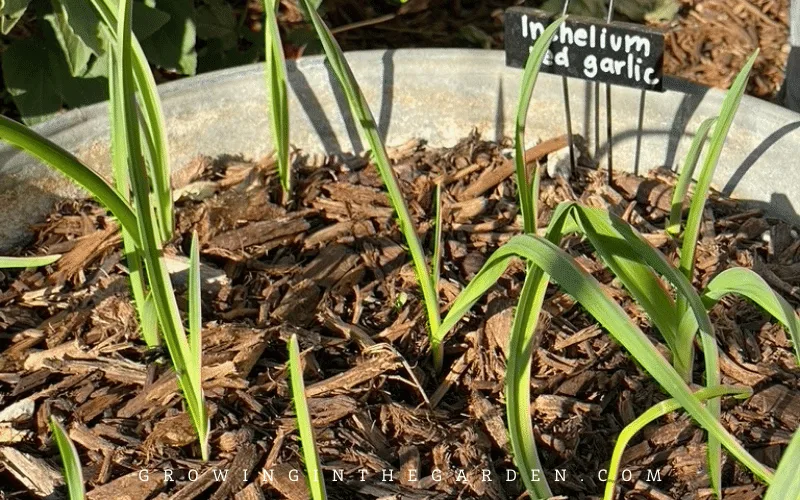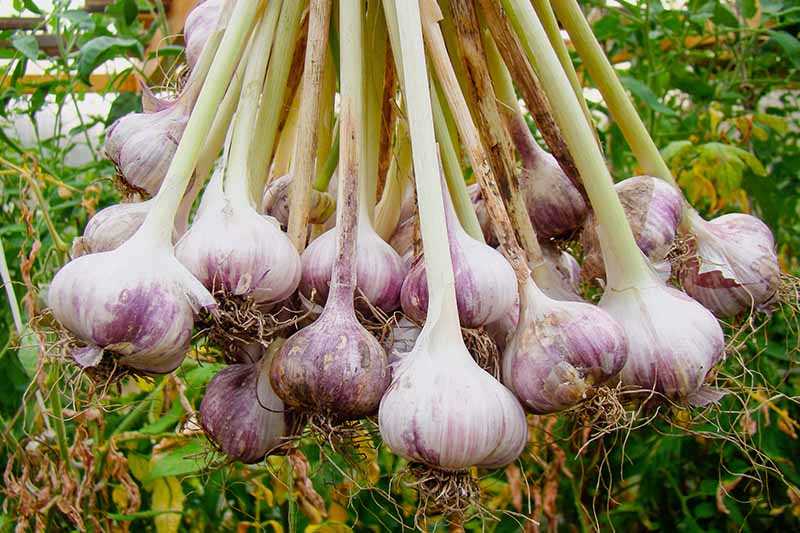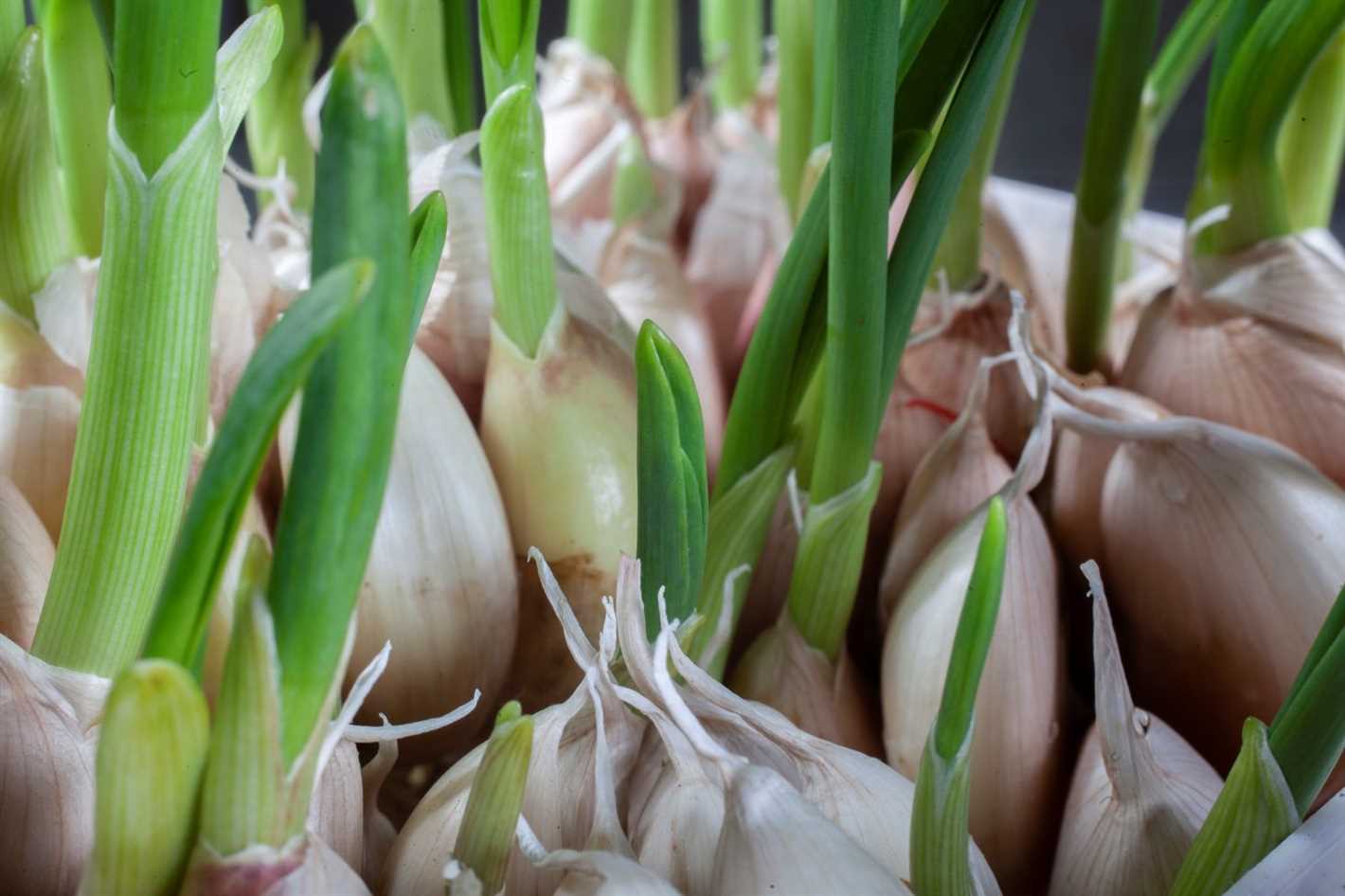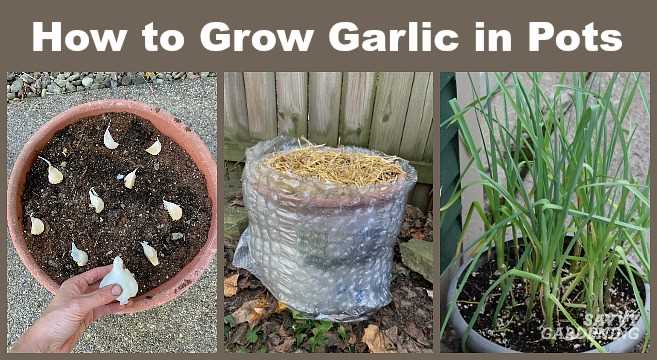- Garlic Companion Plants: Top 8 Options
- 1. Chives
- 2. Peas
- 3. Lettuce
- 4. Tomatoes
- 5. Beets
- 6. Carrots
- 7. Spinach
- 8. Onions
- Benefits of Companion Planting with Garlic
- 1. Natural Pest Control
- 2. Disease Prevention
- 3. Nutrient Enhancement
- 4. Attracting Beneficial Insects
- 5. Weed Suppression
- Choosing the Right Companion Plants
- 1. Pest control
- 2. Soil fertility
- 3. Space utilization
- 4. Beneficial insects
- 5. Compatible plant combinations
- Conclusion
- Allium Family Plants: Perfect Companions for Garlic
- 1. Onions
- 2. Chives
- 3. Leeks
- 4. Shallots
- 5. Garlic Chives
- 6. Society Garlic
- 7. Garlic Mustard
- Brassica Family Plants: Compatible Options
- Legumes: Nitrogen-Fixing Companions for Garlic
- Herbs: Enhancing Garlic’s Flavor and Repelling Pests
- 1. Basil
- 2. Dill
- 3. Chives
- 4. Thyme
- 5. Parsley
- 6. Rosemary
- 7. Sage
- Flowers: Adding Beauty and Deterrents to Your Garlic Bed
- 1. Marigolds
- 2. Chrysanthemums
- 3. Alliums
- 4. Nasturtiums
- 5. Lavender
- 6. Calendula
- Avoiding Incompatible Plants: Plants to Keep Away from Garlic
- “Question-Answer”
- What are companion plants for growing garlic?
- Which plants should I avoid planting with garlic?
- What are some good companion plants for garlic?
- How can companion plants benefit garlic?
- Can companion plants help deter pests?
- How do I plant companion plants with garlic?
- When is the best time to plant garlic and companion plants?
- “Video” This ONE Tip Will DOUBLE The Size of Your Garlic Heads!
Growing garlic is a rewarding experience for any gardener. Not only does it add flavor and aroma to our favorite dishes, but it also has numerous health benefits. However, like any other plant, garlic can thrive even better when planted alongside certain companion plants. Companion planting is a technique that involves growing different plants together to enhance growth, improve flavor, and deter pests.
One of the best companion plants for garlic is the onion. These two plants belong to the same family and are often planted side by side. Onions help repel pests that can damage the garlic plants, such as aphids, thrips, and onion flies. They also provide shade to the garlic plants, preventing them from being exposed to harsh sunlight. The strong odor of onions also masks the scent of garlic, making it less attractive to pests.
Another excellent companion plant for garlic is the chamomile. Chamomile has natural fungicidal properties that can help prevent diseases in garlic, such as white rot. Planting chamomile near garlic can also attract beneficial insects like ladybugs and lacewings, which feed on pests like aphids and mites. Additionally, chamomile is known to improve the flavor of garlic, making it a perfect pairing in the garden.
In addition to onions and chamomile, other beneficial companion plants for garlic include lettuce, carrots, and beets. Lettuce provides shade to the garlic plants and can help keep the soil moist, while carrots and beets attract beneficial insects and improve the overall health of the garden. When planting these companion plants, it’s important to consider the spacing requirements and growth habits of each plant to ensure they don’t compete for nutrients or space.
In conclusion, companion planting is a great way to enhance the growth and productivity of garlic plants. By choosing the right companion plants, gardeners can improve flavor, deter pests, and prevent diseases in their garlic crop. Whether it’s planting onions, chamomile, or other beneficial plants, these companions can turn a simple garlic patch into a thriving and healthy garden.
Garlic Companion Plants: Top 8 Options
When planting garlic, it’s important to choose companion plants that will help enhance its growth and repel pests. Here are the top 8 companion plants to consider:
1. Chives
Chives are excellent companions for garlic because they naturally repel aphids and other harmful insects. They also provide a protective barrier against fungal diseases.
2. Peas
Peas, especially bush peas, make great companions for garlic as they help improve soil nitrogen levels. This nitrogen fixation benefits the growth of garlic bulbs.
3. Lettuce
Lettuce is a perfect companion plant for garlic because it acts as a living mulch, helping to suppress weed growth and conserve moisture in the soil.
4. Tomatoes
Tomatoes repel aphids and other pests that can potentially harm garlic. They also provide shade to the soil and help conserve moisture.
5. Beets
Beets are great companion plants for garlic as they help deter pests such as aphids and spider mites. They also improve the soil structure and add nutrients.
6. Carrots
Carrots are beneficial companions for garlic as they help break up the soil, making it easier for garlic roots to penetrate. They also repel pests like aphids.
7. Spinach
Spinach is an excellent companion plant for garlic as it helps repel aphids and other pests. It also provides shade to the soil, keeping it cool and moist.
8. Onions
Onions make great companions for garlic as they help deter pests and fungal diseases. They also enhance the flavor of both plants when grown together.
By planting these companion plants alongside your garlic, you can help enhance its growth, deter pests, and improve the overall health of your garden.
Benefits of Companion Planting with Garlic
Companion planting refers to the practice of growing different plants close to each other in order to benefit their growth and overall health. When it comes to garlic, there are several plants that can be great companions. Here are some of the benefits of companion planting with garlic:
1. Natural Pest Control
- Garlic is well-known for its pungent smell, which can help repel pests such as aphids, snails, and slugs.
- By planting garlic near other plants, you can help protect them from these common garden pests.
2. Disease Prevention
- Garlic has natural antifungal and antibacterial properties that can help prevent diseases in nearby plants.
- Planting garlic near susceptible plants, such as tomatoes or roses, can help reduce the risk of fungal diseases like powdery mildew.
3. Nutrient Enhancement
- Garlic is a nutrient-rich plant that can enhance the soil’s fertility.
- By planting garlic near other plants, it can help improve nutrient uptake and overall plant growth.
4. Attracting Beneficial Insects
- Garlic flowers are attractive to beneficial insects like bees and butterflies.
- By planting garlic near other plants, you can attract these pollinators to your garden, which can improve fruit set and overall yield.
5. Weed Suppression
- Garlic has dense foliage that can help suppress weed growth.
- Planting garlic near other plants can create a natural mulch barrier, reducing the need for excessive weeding.
Overall, companion planting with garlic can provide numerous benefits for your garden. Whether it’s pest control, disease prevention, nutrient enhancement, attracting beneficial insects, or suppressing weeds, garlic can be a valuable companion plant.
Choosing the Right Companion Plants
When growing garlic, choosing the right companion plants is essential to promote the growth and health of your garlic crop. Companion planting can help with pest control, soil fertility, and overall plant health. Here are some factors to consider when selecting companion plants for garlic:
1. Pest control
Garlic is a natural pest repellent, so choosing companion plants that also have pest-repellent properties can be beneficial. Plants such as marigolds, chives, and onions can help repel pests like aphids, slugs, and nematodes. By interplanting garlic with these companion plants, you can create a more pest-resistant environment.
2. Soil fertility
Garlic is a heavy feeder and requires nutrient-rich soil to grow well. Planting companion plants that help improve soil fertility can enhance the health and yield of your garlic crop. Legumes like beans and peas are nitrogen-fixing plants that can enrich the soil with nitrogen, an essential nutrient for plant growth. Other plants like comfrey and yarrow can help accumulate nutrients and improve soil structure.
3. Space utilization
When choosing companion plants, consider the space available in your garden. Select plants that have a similar growth habit and do not compete for resources with garlic. Avoid planting tall or sprawling plants that can shade or overcrowd the garlic. Instead, opt for smaller plants or vertical growers that can coexist without hindering the growth of the garlic.
4. Beneficial insects
Companion planting can also attract beneficial insects that help with pollination and pest control. Flowers like calendula and borage can attract pollinators like bees and butterflies, which can enhance the overall health and productivity of your garden. Additionally, plants like dill and fennel can attract beneficial insects that prey on pests, providing natural pest control.
5. Compatible plant combinations
Some plants have natural synergies and work well together when planted as companions. For garlic, some excellent companion plant combinations include:
- Garlic and lettuce: Lettuce can provide shade to the garlic during its early growth stages.
- Garlic and strawberries: Strawberries can help repel pests and suppress weeds around the garlic beds.
- Garlic and tomatoes: Garlic can help deter pests like aphids and whiteflies that commonly affect tomatoes.
Remember to plan your garden layout carefully to ensure that companion plants are compatible with garlic and can coexist harmoniously.
Conclusion
Choosing the right companion plants for growing garlic can help promote its growth, deter pests, improve soil fertility, and attract beneficial insects. Consider factors such as pest control, soil fertility, space utilization, beneficial insects, and compatible plant combinations when selecting companion plants for your garlic crop. By implementing companion planting strategies, you can create a healthy and thriving garden ecosystem.
Allium Family Plants: Perfect Companions for Garlic
The Allium family includes a wide variety of plants that are perfect companions for growing garlic. These plants not only enhance the flavor of garlic but also help deter pests and improve overall plant health. Here are some Allium family plants that make excellent companions for garlic:
1. Onions
Onions are one of the best companion plants for garlic. They help deter pests like onion maggots and deter aphids from attacking the garlic plants. Plant onions and garlic together, and both plants will benefit from the natural pest-repellent properties of each other.
2. Chives
Chives are another Allium family plant that make great companions for garlic. They deter aphids and help improve the overall health of garlic plants. Plant chives around your garlic to ward off pests and enjoy the delicious flavor combination of garlic and chives.
3. Leeks
Leeks are closely related to garlic and make excellent companions in the garden. They help deter pests and improve the overall health of garlic plants. Plant leeks alongside your garlic to maximize the benefits of companion planting.
4. Shallots
Shallots are another Allium family plant that can be planted alongside garlic. They have a similar flavor profile and provide the same pest-repellent benefits. Plant shallots and garlic together to create a natural pest barrier and enhance the flavor of both plants.
5. Garlic Chives

Garlic chives are a variety of chives that have a mild garlic flavor. They can be planted alongside garlic to enhance the garlic flavor and deter pests. The combination of garlic and garlic chives creates a strong pest-repellent barrier that will protect your plants.
6. Society Garlic
Society garlic is a plant that has a garlic-like flavor and aroma. It can be planted near garlic to enhance the garlic flavor and deter pests. Society garlic also produces beautiful purple flowers, adding beauty to your garden.
7. Garlic Mustard
Garlic mustard is a biennial plant that can be grown alongside garlic. It has a strong garlic flavor and can be used as an edible herb. Garlic mustard helps deter pests and adds a distinct flavor to your garlic dishes.
By planting these Allium family plants alongside your garlic, you can create a natural pest-repellent barrier and enhance the flavor of your garlic crop. Enjoy the benefits of companion planting and watch your garlic thrive!
Brassica Family Plants: Compatible Options
The Brassica family, also known as the cruciferous vegetables, includes crops like broccoli, cauliflower, cabbage, kale, and radishes. These plants are not only delicious and nutritious, but they can also make excellent companions for growing garlic. Here are some compatible options from the Brassica family:
- Broccoli: Broccoli can be a great companion for garlic. It has deep roots that can help break up the soil and improve drainage. Additionally, broccoli can help deter pests like aphids and cabbage worms.
- Cauliflower: Cauliflower is another member of the Brassica family that can be planted alongside garlic. It has similar benefits to broccoli in terms of improving soil structure and deterring pests.
- Cabbage: Cabbage is known for its strong scent, which can help repel pests like caterpillars and aphids. It can also provide shade for garlic plants and help conserve soil moisture.
- Kale: Kale is a nutrient-dense vegetable that can be a great companion for garlic. It is a cool-season crop, which means it can be planted in the fall along with garlic. Kale’s deep roots can help improve soil structure and prevent erosion.
- Radishes: Radishes are quick-growing root vegetables that can be planted as a companion to garlic. They can help break up the soil, improve drainage, and attract beneficial insects like ladybugs.
When planting garlic alongside Brassica family plants, it is important to provide adequate spacing between the crops to allow for proper growth and airflow. Avoid planting them too closely together to prevent competition for nutrients and sunlight.
In summary, the Brassica family offers several compatible options for companion planting with garlic. By selecting these plants as companions, you can enhance soil health, deter pests, and maximize the productivity of your garlic crop.
Legumes: Nitrogen-Fixing Companions for Garlic
Legumes are excellent companion plants for garlic because they have the ability to fix nitrogen in the soil. Nitrogen fixation is the process by which legumes convert atmospheric nitrogen into a usable form that can benefit other plants.
Garlic is a heavy feeder and requires a steady supply of nutrients, especially nitrogen, to grow well. By planting legumes alongside garlic, you can ensure that the soil remains rich in nitrogen throughout the growing season.
Here are some legumes that make great companions for garlic:
- Beans: Bush beans, pole beans, and runner beans are all nitrogen-fixing legumes that can be planted alongside garlic. Additionally, the tall growing beans can provide some shade for the garlic during hot summer months.
- Peas: Peas are another nitrogen-fixing legume that make great companions for garlic. They can be planted in early spring alongside garlic and will be ready for harvest before garlic is ready to harvest, allowing you to make the most of your garden space.
- Lentils: Lentils are a nutritious legume that can be planted alongside garlic. They can tolerate cooler temperatures and can be sown in early spring or late summer.
- Clover: Clover is a legume that can be grown as a cover crop or as a companion plant for garlic. It helps to suppress weeds, improves soil structure, and adds nitrogen to the soil.
When planting legumes alongside garlic, it is important to consider their growth habits. Some legumes, like beans and peas, can climb and may require trellises or support structures. Others, like clover and lentils, stay close to the ground and do not require any additional support.
It is also important to rotate legumes and garlic in your garden beds to prevent the build-up of diseases and pests. A good crop rotation plan can help maintain the health and productivity of your garden.
In conclusion, planting legumes alongside garlic can provide it with a steady supply of nitrogen and improve the overall health and productivity of your garden. Consider adding some legumes to your garden beds and enjoy the benefits they bring to your garlic crop!
Herbs: Enhancing Garlic’s Flavor and Repelling Pests
When it comes to growing garlic, choosing the right companion plants can make a big difference in terms of flavor enhancement and pest control. Herbs are an excellent choice as companion plants for garlic, as they can enhance the flavor of the bulbs and help repel common pests.
1. Basil
Basil is known for its strong aroma and can enhance the flavor of garlic when planted together. It also repels mosquitoes, aphids, and flies, making it a great pest control companion for garlic.
2. Dill
Dill not only adds a unique flavor to garlic but also attracts beneficial insects, such as ladybugs and wasps, which feed on pests like aphids and caterpillars. Planting dill near garlic can help deter pests and promote a healthier garden ecosystem.
3. Chives
Chives are another herb that complements the taste of garlic. They have a mild onion-like flavor and can be harvested at different stages of growth. Chives also repel harmful insects like aphids, making them a beneficial companion for garlic.
4. Thyme
Thyme is a low-growing herb that releases an aromatic scent. Its essential oils repel pests like cabbage worms, corn earworms, and tomato hornworms. Thyme also complements the flavor of garlic when used together in cooking.
5. Parsley
Parsley is a versatile herb that can be grown alongside garlic. It has a fresh and slightly tangy flavor that pairs well with garlic. Parsley also attracts beneficial insects like hoverflies, which prey on aphids and other harmful pests.
6. Rosemary

Rosemary has a distinctive pine-like fragrance and is known to repel pests like cabbage moths and carrot flies. It adds a savory flavor to garlic dishes and can be grown as a companion plant for both outdoor and indoor garlic cultivation.
7. Sage

Sage is a herb that complements the flavor of garlic, especially when used in poultry and meat dishes. It repels various pests, including carrot flies, cabbage moths, and ticks. Planting sage near garlic can help deter these pests and protect your garden.
By planting these herbs alongside your garlic, you can both enhance the flavor of your garlic harvest and repel pests naturally. Remember to provide adequate space and sunlight for each herb, as they have different growth requirements. Enjoy the benefits of these companion plants and create a thriving garden ecosystem!
Flowers: Adding Beauty and Deterrents to Your Garlic Bed
In addition to their beauty, flowers can also serve as effective deterrents for pests and insects in your garlic bed. By planting certain flowers alongside your garlic plants, you can create a visually appealing and pest-resistant garden. Here are some flowers that are known to be great companions for growing garlic:
1. Marigolds
Marigolds are one of the most popular companion plants for garlic. Their strong scent deters a wide range of pests, including aphids, nematodes, and mosquitoes. Plant marigolds around the perimeter of your garlic bed to create a barrier and keep unwanted insects at bay.
2. Chrysanthemums
Chrysanthemums contain natural chemicals called pyrethrins, which are known for their insect-repellent properties. These flowers can repel aphids, whiteflies, and other common garden pests. Plant chrysanthemums near your garlic plants to provide a natural defense against pests.
3. Alliums
Alliums, such as onions and leeks, are close relatives of garlic and can be planted alongside your garlic bed. These aromatic plants emit a strong scent that can deter a wide range of pests, including aphids, carrot flies, and cabbage worms.
4. Nasturtiums
Nasturtiums are not only beautiful, but they also have natural insect-repellent properties. These flowers can attract aphids and other pests away from your garlic plants, acting as sacrificial plants. Additionally, nasturtiums can help improve soil fertility by attracting beneficial insects and acting as a trap crop.
5. Lavender
Lavender is a fragrant flower that can help deter mosquitoes, flies, and other insects. Planting lavender near your garlic bed not only adds beauty and scent to your garden, but it can also provide a natural pest control solution.
6. Calendula

Calendula, also known as pot marigold, is a versatile flower that can attract beneficial insects, such as ladybugs and lacewings, which feed on aphids and other pests. Planting calendula near your garlic can help attract these beneficial insects and provide natural pest control.
By incorporating these flowers into your garlic bed, you can enhance the beauty of your garden while also deterring pests and insects. Remember to mix and match different flowers to create a visually appealing and pest-resistant environment for your garlic plants.
Avoiding Incompatible Plants: Plants to Keep Away from Garlic
When planning your garlic garden, it’s important to be aware of plants that can have a negative impact on the growth and flavor of garlic. Here is a list of plants that are best kept away from garlic:
- Onions: While garlic and onions are often grown together, they can sometimes compete for nutrients and space. It’s best to keep them separated to ensure optimal growth.
- Beans: Beans are known as heavy feeders, meaning they require a lot of nutrients. Planting them near garlic may result in stunted garlic growth.
- Peas: Peas are also known for their high nutrient demands. Similar to beans, planting them near garlic can hinder its growth.
- Radishes: Radishes are quick-growing plants that can sometimes overshadow garlic. Keep them at a distance to avoid competition for resources.
- Strawberries: Garlic and strawberries have different soil pH requirements. Planting them together can create an imbalanced soil environment for both crops.
- Asparagus: Asparagus has an extensive root system that can compete with garlic for nutrients and water. It’s best to avoid planting them together.
By keeping these incompatible plants away from your garlic garden, you can ensure optimal growth and flavor for your garlic crop.
“Question-Answer”
What are companion plants for growing garlic?
Companion plants for growing garlic are plants that can benefit or support the growth of garlic when planted together. They can help deter pests, improve soil quality, and enhance the overall health and flavor of garlic.
Which plants should I avoid planting with garlic?
It is best to avoid planting garlic with plants that have similar growth requirements, as they can compete for resources. Additionally, avoid planting garlic with plants that are prone to diseases that can affect garlic, such as onions and other alliums.
What are some good companion plants for garlic?
Some good companion plants for garlic include chives, chamomile, yarrow, marigolds, and strawberries. These plants can help repel pests, attract beneficial insects, and improve soil health.
How can companion plants benefit garlic?
Companion plants can benefit garlic in several ways. They can repel pests that may attack garlic, attract beneficial insects that can pollinate garlic flowers or eat pests, improve soil quality by fixing nitrogen or adding organic matter, and enhance the flavor of garlic.
Can companion plants help deter pests?
Yes, companion plants can help deter pests that may attack garlic. For example, planting marigolds or chives near garlic can repel aphids and other insects. The strong scent of these plants can mask the smell of garlic and make it less attractive to pests.
How do I plant companion plants with garlic?
To plant companion plants with garlic, you can either interplant them throughout the garlic bed or create separate clusters of companion plants. Make sure to give enough space between plants for airflow and to avoid overcrowding. Water and mulch the bed regularly to maintain soil moisture.
When is the best time to plant garlic and companion plants?
The best time to plant garlic is in the fall, around 4-6 weeks before the ground freezes. As for companion plants, they can be planted at the same time as garlic or whenever they are ready for planting, considering their specific requirements.







